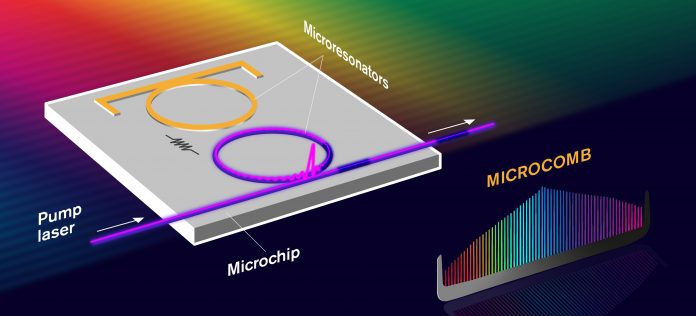Researchers from Chalmers University of Technology, Sweden, have developed a photonic microcomb that could be used to find new exoplanets, monitor people’s health, and make the internet more energy efficient.
A microcomb is a photonic device capable of generating a myriad of optical frequencies on a tiny cavity known as microresonator. These colours are uniformly distributed so the microcomb behaves like a ‘ruler made of light.’ The device can be used to measure or generate frequencies with extreme precision.
In a recent article in the journal Nature Photonics, eight Chalmers researchers describe a new kind of microcomb on a chip, based on two microresonators. The new microcomb is a coherent, tuneable, and reproducible device with up to ten times higher net conversion efficiency than the current state of the art.
Óskar Bjarki Helgason, a PhD student at the Department of Microtechnology and Nanoscience at Chalmers, and first author of the new article, said: “The reason why the results are important is that they represent a unique combination of characteristics, in terms of efficiency, low-power operation, and control, that are unprecedented in the field.”
The main features of the device
Almost any measurement can be linked to frequency, and the microcombs offer a wide range of potential applications. They could radically decrease the power consumption in optical communication systems, with tens of lasers being replaced by a single chip-scale microcomb in data centre interconnects. They could also be used in lidar for autonomous driving vehicles to measure distances.
Victor Torres Company, who leads the research project at Chalmers, said: “For the technology to be practical and find its use outside the lab, we need to co-integrate additional elements with the microresonators, such as lasers, modulators and control electronics. This is a huge challenge, that requires maybe five to ten years and an investment in engineering research. But I am convinced that it will happen.
“The most interesting advances and applications are the ones that we have not even conceived of yet. This will likely be enabled by the possibility of having multiple microcombs on the same chip. What could we achieve with tens of microcombs that we cannot do with one?”









